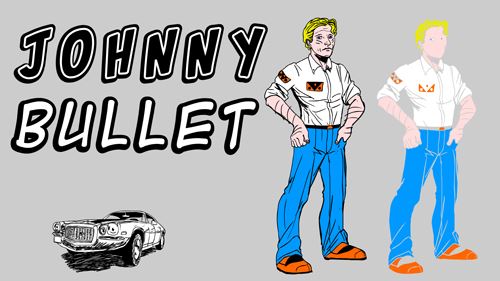Flatters and Comics
By Hervé St-Louis
September 3, 2015 - 21:16
 |
Web comic creators often have low-key operations and do everything themselves or with but one another colleague. Working with a flatter is not something that sounds like part of our production practices.
Flatters separate areas in a comic page so that colourists can focus on enhancing visuals. This relieves the colourist of much of the mechanical processes involved in comic book colouring.
This is possible because most colourists use graphic programs to color comics. Most comics painted digitally are coloured by colourists with Above Photoshop, Corel Painter or Corel PhotoPaint. These programs are raster colouring programs. The flatter or colourists import a scan or a copy of a digital comic and colour them.
Other illustration and animation programs can also help colourists and flatters but are less standardized in the industry. For example, awards-winning colourist Steve Oliff, an early user of digital colouring used vector illustration programs.
Adobe Illustrator. Vector illustration programs like Illustrator when exported as bitmap files, often save images under CMYK colour palettes. Both flatters and colourists should be aware of this and save the final image for print under the right colour palette. Printed comics should be saved as CMYK while Web comics should be saved as RGB files because they will be viewed on an electronic screen.
Flatting with vector programs is different. Vector programs isolate sections of a comic page easily. However, if the colouring continues in a raster program like Photoshop, the rasterizing process will muddy the borders between sections of your illustration.
Flatters often are less responsible for such details. If you are an individual Web comic artist working with a flatter, be aware that your flatter is an assistant only and not the final decision-maker on critical matters such as colour palettes.
Flatters, although not well-recognized by the comic industry, come from all backgrounds. Many flatters are Web comic creators or junior assistants who are learning their craft. They are seldom credited by comics publishers, but I suggest that we break this practice and start crediting all of the creators who work on our comics, including those who work on less glorious parts of our comics.
Flatters, unfortunately, are not paid much. I have seen rates as low as $7 but many range around $20. As Web comic creators, hiring a flatter to help us on a project is a serious decision. Most Web comic creators do not earn much money with their comics.
My strategy with my own Web comic Johnny Bullet, as it concerns hiring a flatter, is to work with a flatter only when I'll be ready to publish a printed version of my work. Financing the flatter's labour will be part of the goals I will set for myself when raising money to pay for a print run.
Flatter's work is dull but contribute much to help comic creators.
Related Articles:
Flatters and Comics
Flatters – Unsung Heroes of Comics Production
